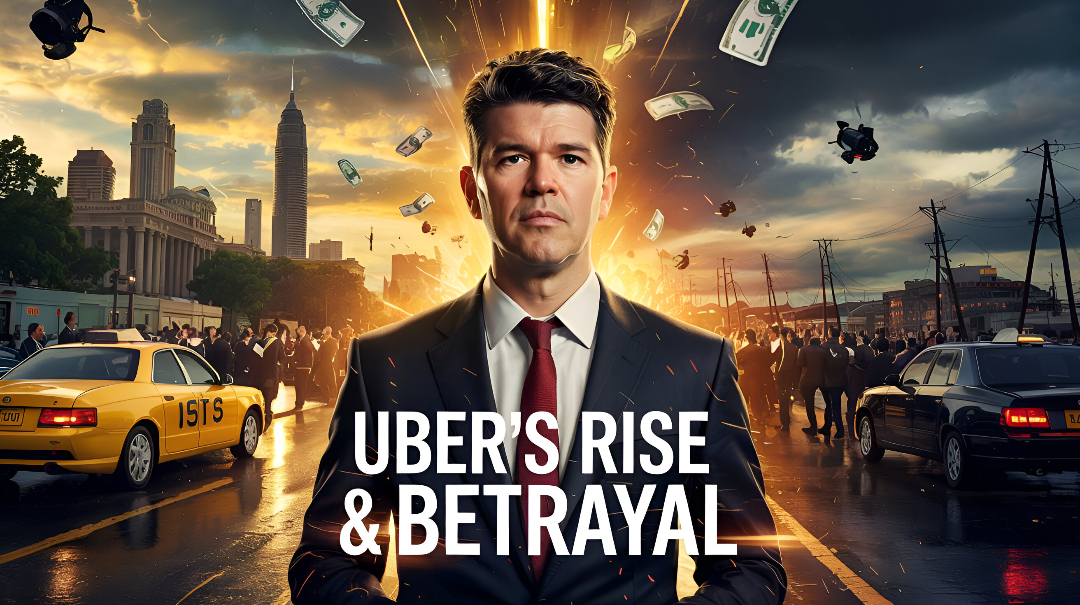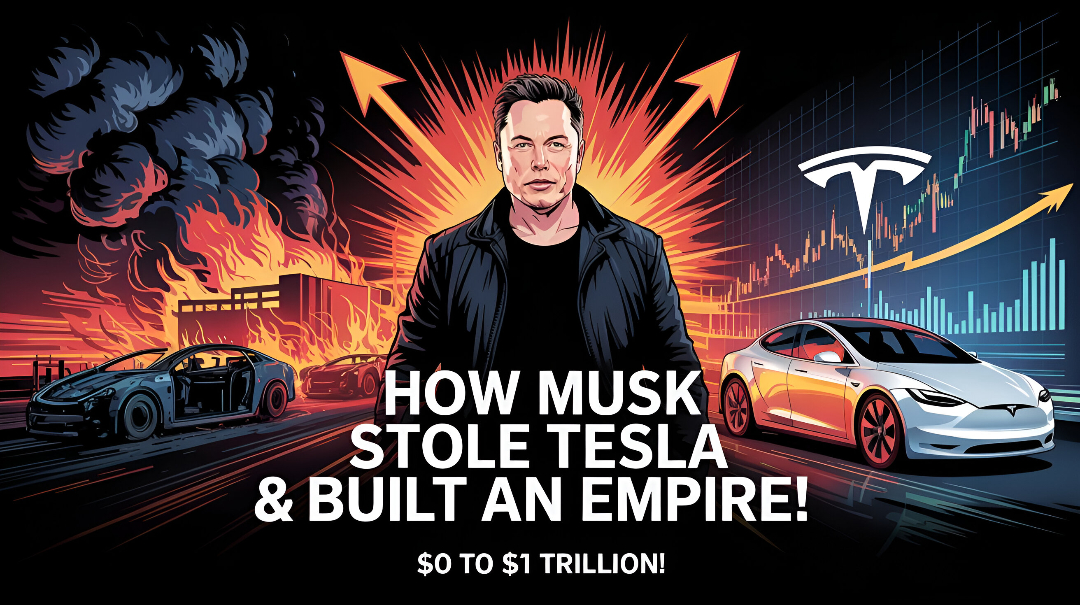Back
Vishu Bheda
•
Medial • 9m
𝗧𝗵𝗲 𝗦𝗲𝗰𝗿𝗲𝘁 𝗕𝗲𝗵𝗶𝗻𝗱 𝗜𝗻𝗱𝗶𝗮’𝘀 𝗕𝗶𝗴𝗴𝗲𝘀𝘁 𝗦𝘁𝗮𝗿𝘁𝘂𝗽 𝗠𝗲𝗿𝗴𝗲𝗿𝘀 Startups love to sell the dream of building the next unicorn. But what happens when the dream 𝐜𝐫𝐚𝐬𝐡𝐞𝐬? You’ve seen it before—𝐨𝐧𝐞 𝐝𝐚𝐲, 𝐭𝐰𝐨 𝐫𝐢𝐯𝐚𝐥 𝐬𝐭𝐚𝐫𝐭𝐮𝐩𝐬 𝐚𝐫𝐞 𝐟𝐢𝐠𝐡𝐭𝐢𝐧𝐠 𝐟𝐨𝐫 𝐦𝐚𝐫𝐤𝐞𝐭 𝐬𝐡𝐚𝐫𝐞, 𝐚𝐧𝐝 𝐭𝐡𝐞 𝐧𝐞𝐱𝐭, 𝐭𝐡𝐞𝐲 𝐚𝐧𝐧𝐨𝐮𝐧𝐜𝐞 𝐚 “𝐬𝐭𝐫𝐚𝐭𝐞𝐠𝐢𝐜 𝐦𝐞𝐫𝐠𝐞𝐫.” But here’s the truth: 𝐦𝐨𝐬𝐭 𝐬𝐭𝐚𝐫𝐭𝐮𝐩 𝐦𝐞𝐫𝐠𝐞𝐫𝐬 𝐢𝐧 𝐈𝐧𝐝𝐢𝐚 𝐚𝐫𝐞𝐧’𝐭 𝐚𝐛𝐨𝐮𝐭 𝐠𝐫𝐨𝐰𝐭𝐡. They’re about 𝐝𝐚𝐦𝐚𝐠𝐞 𝐜𝐨𝐧𝐭𝐫𝐨𝐥, 𝐢𝐧𝐯𝐞𝐬𝐭𝐨𝐫 𝐩𝐫𝐞𝐬𝐬𝐮𝐫𝐞, 𝐚𝐧𝐝 𝐬𝐢𝐥𝐞𝐧𝐭 𝐩𝐨𝐰𝐞𝐫 𝐬𝐭𝐫𝐮𝐠𝐠𝐥𝐞𝐬. Let’s break down how these deals actually work—and who truly benefits. When two big startups merge, it’s rarely because they want to. It’s because they 𝐡𝐚𝐯𝐞 𝐭𝐨. Here’s why: 𝟭. 𝗧𝗵𝗲 𝗙𝗮𝗶𝗹𝗶𝗻𝗴 𝗦𝘁𝗮𝗿𝘁𝘂𝗽 𝗥𝗲𝘀𝗰𝘂𝗲 Many mergers happen because 𝐨𝐧𝐞 𝐬𝐭𝐚𝐫𝐭𝐮𝐩 𝐢𝐬 𝐫𝐮𝐧𝐧𝐢𝐧𝐠 𝐨𝐮𝐭 𝐨𝐟 𝐦𝐨𝐧𝐞𝐲. Instead of shutting down, 𝐭𝐡𝐞𝐲 𝐚𝐜𝐜𝐞𝐩𝐭 𝐚 𝐛𝐮𝐲𝐨𝐮𝐭—𝐨𝐟𝐭𝐞𝐧 𝐚𝐭 𝐚 𝐦𝐮𝐜𝐡 𝐥𝐨𝐰𝐞𝐫 𝐯𝐚𝐥𝐮𝐚𝐭𝐢𝐨𝐧. For example, 𝐔𝐛𝐞𝐫 𝐄𝐚𝐭𝐬 𝐈𝐧𝐝𝐢𝐚 𝐰𝐚𝐬 𝐛𝐮𝐫𝐧𝐢𝐧𝐠 𝐜𝐚𝐬𝐡, 𝐬𝐨 𝐔𝐛𝐞𝐫 𝐬𝐨𝐥𝐝 𝐢𝐭 𝐭𝐨 𝐙𝐨𝐦𝐚𝐭𝐨 𝐢𝐧 𝟐𝟎𝟐𝟎. Sounds like a business move, right? 𝐁𝐮𝐭 𝐔𝐛𝐞𝐫 𝐦𝐚𝐝𝐞 𝐬𝐮𝐫𝐞 𝐭𝐨 𝐠𝐞𝐭 𝐙𝐨𝐦𝐚𝐭𝐨 𝐬𝐡𝐚𝐫𝐞𝐬 𝐢𝐧 𝐭𝐡𝐞 𝐝𝐞𝐚𝐥—𝐭𝐮𝐫𝐧𝐢𝐧𝐠 𝐚 𝐥𝐨𝐬𝐬-𝐦𝐚𝐤𝐢𝐧𝐠 𝐛𝐮𝐬𝐢𝐧𝐞𝐬𝐬 𝐢𝐧𝐭𝐨 𝐚 𝐯𝐚𝐥𝐮𝐚𝐛𝐥𝐞 𝐚𝐬𝐬𝐞𝐭. 𝟮. 𝗧𝗵𝗲 𝗩𝗖-𝗙𝗼𝗿𝗰𝗲𝗱 𝗠𝗲𝗿𝗴𝗲𝗿 Investors don’t like their money getting wasted. When two startups are burning millions 𝐜𝐨𝐦𝐩𝐞𝐭𝐢𝐧𝐠 𝐚𝐠𝐚𝐢𝐧𝐬𝐭 𝐞𝐚𝐜𝐡 𝐨𝐭𝐡𝐞𝐫, venture capitalists step in and force a merger. They don’t care about founders or customers. 𝐓𝐡𝐞𝐲 𝐜𝐚𝐫𝐞 𝐚𝐛𝐨𝐮𝐭 𝐩𝐫𝐨𝐭𝐞𝐜𝐭𝐢𝐧𝐠 𝐭𝐡𝐞𝐢𝐫 𝐢𝐧𝐯𝐞𝐬𝐭𝐦𝐞𝐧𝐭. For example, 𝐎𝐥𝐚 𝐚𝐜𝐪𝐮𝐢𝐫𝐞𝐝 𝐓𝐚𝐱𝐢𝐅𝐨𝐫𝐒𝐮𝐫𝐞 𝐢𝐧 𝟐𝟎𝟏𝟓—𝐨𝐧𝐥𝐲 𝐭𝐨 𝐬𝐡𝐮𝐭 𝐢𝐭 𝐝𝐨𝐰𝐧. Investors just wanted one dominant player, so they killed the competition. 𝟯. 𝗧𝗵𝗲 𝗠𝗼𝗻𝗼𝗽𝗼𝗹𝘆 𝗠𝗼𝘃𝗲 Big startups don’t want competitors. So, 𝐭𝐡𝐞𝐲 𝐛𝐮𝐲 𝐭𝐡𝐞𝐦. Instead of fighting for market share, they 𝐦𝐞𝐫𝐠𝐞, 𝐝𝐨𝐦𝐢𝐧𝐚𝐭𝐞 𝐭𝐡𝐞 𝐢𝐧𝐝𝐮𝐬𝐭𝐫𝐲, 𝐚𝐧𝐝 𝐫𝐚𝐢𝐬𝐞 𝐩𝐫𝐢𝐜𝐞𝐬. For example, 𝐅𝐥𝐢𝐩𝐤𝐚𝐫𝐭 𝐚𝐜𝐪𝐮𝐢𝐫𝐞𝐝 𝐌𝐲𝐧𝐭𝐫𝐚 𝐢𝐧 𝟐𝟎𝟏𝟒 to control fashion e-commerce. Today, there’s barely any serious competition left in that space. 𝟰. 𝗧𝗵𝗲 𝗙𝗼𝘂𝗻𝗱𝗲𝗿’𝘀 𝗘𝘅𝗶𝘁 𝗣𝗹𝗮𝗻 Sometimes, 𝐟𝐨𝐮𝐧𝐝𝐞𝐫𝐬 𝐬𝐞𝐞 𝐚 𝐜𝐫𝐚𝐬𝐡 𝐜𝐨𝐦𝐢𝐧𝐠 𝐚𝐧𝐝 𝐦𝐞𝐫𝐠𝐞 𝐭𝐨 𝐞𝐬𝐜𝐚𝐩𝐞. They take the payout, secure a top position in the new company, and move on. Byju’s acquisition of 𝐖𝐡𝐢𝐭𝐞𝐇𝐚𝐭 𝐉𝐫. 𝐢𝐧 𝟐𝟎𝟐𝟎 𝐟𝐨𝐫 $𝟑𝟎𝟎𝐌 is a perfect example. Within two years, 𝐖𝐡𝐢𝐭𝐞𝐇𝐚𝐭 𝐉𝐫. 𝐜𝐨𝐥𝐥𝐚𝐩𝐬𝐞𝐝—𝐛𝐮𝐭 𝐭𝐡𝐞 𝐟𝐨𝐮𝐧𝐝𝐞𝐫 𝐡𝐚𝐝 𝐚𝐥𝐫𝐞𝐚𝐝𝐲 𝐜𝐚𝐬𝐡𝐞𝐝 𝐨𝐮𝐭. Here’s the question nobody asks: 𝐀𝐫𝐞 𝐭𝐡𝐞𝐬𝐞 𝐦𝐞𝐫𝐠𝐞𝐫𝐬 𝐫𝐞𝐚𝐥𝐥𝐲 𝐠𝐨𝐨𝐝 𝐟𝐨𝐫 𝐭𝐡𝐞 𝐞𝐜𝐨𝐬𝐲𝐬𝐭𝐞𝐦? 𝗙𝗼𝗿 𝗳𝗼𝘂𝗻𝗱𝗲𝗿𝘀? Many lose control of their vision. 𝗙𝗼𝗿 𝗲𝗺𝗽𝗹𝗼𝘆𝗲𝗲𝘀? Mass layoffs often follow. 𝗙𝗼𝗿 𝗰𝘂𝘀𝘁𝗼𝗺𝗲𝗿𝘀? Higher prices and fewer choices. Yet, VCs, big startups, and industry giants 𝐤𝐞𝐞𝐩 𝐫𝐞𝐩𝐞𝐚𝐭𝐢𝐧𝐠 𝐭𝐡𝐢𝐬 𝐜𝐲𝐜𝐥𝐞. Because for them, 𝐚 𝐦𝐞𝐫𝐠𝐞𝐫 𝐢𝐬𝐧’𝐭 𝐚𝐛𝐨𝐮𝐭 𝐬𝐮𝐫𝐯𝐢𝐯𝐚𝐥—𝐢𝐭’𝐬 𝐚𝐛𝐨𝐮𝐭 𝐩𝐨𝐰𝐞𝐫. If you’re a startup founder, here’s how to avoid getting trapped in this game: 1. 𝗦𝘁𝗮𝘆 𝗽𝗿𝗼𝗳𝗶𝘁𝗮𝗯𝗹𝗲 – If you don’t rely on VC money, 𝐲𝐨𝐮 𝐜𝐚𝐧 𝐜𝐚𝐥𝐥 𝐲𝐨𝐮𝐫 𝐨𝐰𝐧 𝐬𝐡𝐨𝐭𝐬. 2. 𝗕𝘂𝗶𝗹𝗱 𝗮 𝘂𝗻𝗶𝗾𝘂𝗲 𝗺𝗼𝗮𝘁 – If your startup has something irreplaceable, 𝐛𝐢𝐠 𝐩𝐥𝐚𝐲𝐞𝐫𝐬 𝐜𝐚𝐧’𝐭 𝐣𝐮𝐬𝐭 𝐛𝐮𝐲 𝐚𝐧𝐝 𝐤𝐢𝐥𝐥 𝐲𝐨𝐮. 3. 𝗖𝗵𝗼𝗼𝘀𝗲 𝗶𝗻𝘃𝗲𝘀𝘁𝗼𝗿𝘀 𝘄𝗶𝘀𝗲𝗹𝘆 – Some VCs 𝐟𝐮𝐧𝐝 𝐜𝐨𝐦𝐩𝐞𝐭𝐢𝐭𝐨𝐫𝐬 𝐚𝐧𝐝 𝐥𝐚𝐭𝐞𝐫 𝐟𝐨𝐫𝐜𝐞 𝐭𝐡𝐞𝐦 𝐭𝐨 𝐦𝐞𝐫𝐠𝐞. Avoid these traps. 4. 𝗗𝗼𝗻’𝘁 𝗰𝗵𝗮𝘀𝗲 𝘀𝗵𝗼𝗿𝘁-𝘁𝗲𝗿𝗺 𝗲𝘅𝗶𝘁𝘀– A quick payout 𝐢𝐬𝐧’𝐭 𝐚𝐥𝐰𝐚𝐲𝐬 𝐚 𝐰𝐢𝐧 if you lose control of your startup. Which startup merger do you think was a genius move? And which one completely ruined a good company? Let’s discuss below! I hope you've found this helpful. Follow Vishu Bheda for more detailed insights about indian startup ecosystem!

Replies (2)
More like this
Recommendations from Medial
Download the medial app to read full posts, comements and news.




































